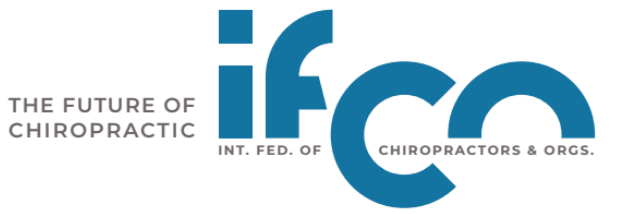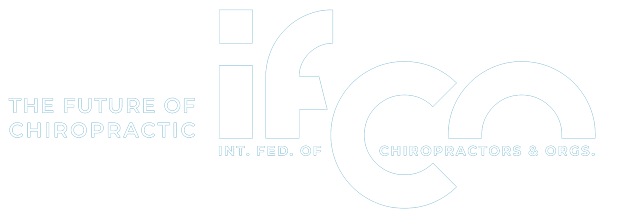IFCO Position Papers
Click on the links below to select the paper of your choice.
Get more professional news, updates, and other valuable resources. Subscribe today!
The International Federation of Chiropractors and Organizations (IFCO) stands firmly against Montana’s HB 500, a dangerous and misguided bill that seeks to grant chiropractors the ability to prescribe drugs. Chiropractic is and always has been a distinct, drug-free profession. Expanding its scope to include pharmaceuticals would not only compromise patient safety but also blur the essential distinction between chiropractic and medicine. This is not just a state-level issue. If Montana allows this expansion, it will set a precedent for other states to follow, jeopardizing the integrity of chiropractic nationwide. Chiropractors, students, and patients must understand the consequences and take a stand to protect the profession. Chiropractic Leaders Reject HB 500 Two of the most respected chiropractic colleges in the world have issued strong statements opposing HB 500, reaffirming that chiropractic was never meant to include drugs. Dr. Dennis Marchiori, DC, PhD, Chancellor of Palmer College of Chiropractic—the oldest and largest chiropractic institution—made Palmer’s position absolutely clear: “As Chancellor and CEO of the oldest and largest college of chiropractic in the world, I am writing to express opposition to the expansion of prescription pharmaceuticals into the clinical scope of chiropractic practice. Chiropractic was founded in 1895 in Davenport, Iowa, at Palmer College of Chiropractic. Palmer has spent years researching and carefully crafting an identity for chiropractors as the primary care professionals for spinal health and well-being. Chiropractic focuses on neurological and musculoskeletal integrity and aims to favorably impact human health, relieve pain and infirmity, enhance performance, and improve quality of life—without drugs or surgery.” Likewise, Dr. Jack M. Bourla, DC, ACP, President of Sherman College of Chiropractic, condemned the bill and highlighted the risks to public safety: “Prescribing medications has never been within the scope of chiropractic care. It is, and should continue to be, outside of our scope of practice. Chiropractors are not trained to prescribe medications, and our students are in no way prepared to be prescribers of medication. MDs and other medical specialists spend hundreds of hours in pharmacology education and clinical experience. They understand the desired effects, side effects, contraindications, addiction risks, and safety concerns related to prescription medications. A ‘weekend-style course’ ultimately allowing chiropractors to prescribe drugs is risky at best. Chiropractors are highly trained—nearly four years—at analyzing the spinal structure and its effects on the nervous system and vertebral misalignment. That is our scope of practice. We are not qualified, nor should we be trained, in an area already addressed by well-trained professionals. Sherman College of Chiropractic vehemently opposes this bill and urges lawmakers to recognize the risks and dangers it presents.” Medical Doctors Agree: Chiropractic and Medicine Are Separate Professions The Montana Medical Association (MMA) has also taken a firm stance against HB 500. Dr. Ernest J. Gray, MD, President of the MMA, reinforced the necessity of keeping chiropractic and medicine distinct: “As President of the Montana Medical Association, I share that the MMA and I, personally, oppose the granting of prescriptive authority for the chiropractic profession. The art and science of chiropractic is the adjustment and rebalancing of the spinal and skeletal system to achieve whole-body health. It has never advocated for the use of pharmaceutical agents as part of its treatment modalities.” This powerful statement underscores the fact that medical professionals themselves see the inherent dangers in allowing chiropractors to prescribe drugs. Chiropractic and medicine serve different purposes, and blurring the lines between them benefits no one—especially not the patients. HB 500 Undermines the Foundation of Chiropractic HB 500 is an outright assault on chiropractic’s foundational principles. Chiropractic was never meant to be an alternative route to prescribing drugs—it was created as a distinct, drug-free profession. Those pushing this bill are not acting in the best interests of patients or chiropractors; they are attempting to fundamentally change the profession for their own agenda. The IFCO rejects the argument that adding pharmaceuticals to chiropractic care would somehow “modernize” the profession. What has made chiropractic successful is its focus on natural health and its effectiveness without the use of drugs or surgery. Expanding scope into prescribing is not progress—it is a dangerous dilution of the very essence of chiropractic. Montana is now the battleground, but the outcome of this fight will have repercussions far beyond state borders. If HB 500 passes, it will open the door for similar legislative pushes across the country. This is not a state issue—it is a defining moment for the profession itself. IFCO’s Call to Action The IFCO remains steadfast in its commitment to protecting chiropractic’s drug-free identity. With HB 500 back in play, the time to act is now. We urge chiropractors, students, patients, and legislators to reject this blatant attempt to medicalize chiropractic. The message from Palmer College, Sherman College, and the Montana Medical Association is clear: Chiropractic does not and should not include drugs. The IFCO calls on Montana legislators to vote NO on HB 500. The future of chiropractic depends on it. IFCO President Travis M. Corcoran D.C., A.C.P.
The IFCO agrees with the below Foundation for Vertebral Subluxation’s (FVSR) proposed amendment to the FCLB’s proposed resolution that reads: “Now therefore be it – Resolved, that the Federation of Chiropractic Licensing Boards recommends: 1) That the use of radiographic imaging in patient care is at the professional judgement of the attending Doctor of Chiropractic and […]
The IFCO has become aware of troubling amendments to the College of Chiropractors of British Columbia’s February 2021 Amendments to the Professional Conduct Handbook that were approved by their board. It is the position of the IFCO that these amendments are in conflict with the salutogenic, vitalistic, and subluxation-centric platform that we support and promote. […]
From the beginning of the chiropractic profession, chiropractors have been checking and adjusting animals. We envision a world in which Animal Chiropractic stands as a separate and distinct philosophy, art, and science, practiced by both trained chiropractors and veterinarians, for the improved quality of life, health, and vitality of the animals they serve. We recognize […]
Chiropractic contributes its unique salutogenic health care approach to the emergent COVID-19 crisis
Chiropractic contributes its unique salutogenic health care approach to the emergent COVID-19 crisis Amy Haas and Dave Russell In the face of the current global concerns, it is important to work together as a community to support all possibilities for the optimal health and wellbeing of humanity. Chiropractic care is a unique salutogenic approach to […]

International Federation of Chiropractors & Organizations Phone 4012254799 Ifcochiro.execdir@gmail.com PO Box 23517 Providence, RI 02903 Press Release IFCO POSITION ON VERTEBRAL SUBLUXATION May 26, 2017: The International Federation of Chiropractors and Organizations (IFCO) represents that group of global chiropractors who desire to locate, analyze, and correct vertebral subluxations because vertebral subluxations are a […]

The uniqueness of the chiropractic objective impacts upon chiropractic technique. Since the objective of correcting vertebral subluxation is to allow the innate intelligence of the body to be more fully expressed, any technique or instrument that assists in the location, analysis and/or correction of vertebral subluxation is relevant to the practice of chiropractic. It is […]

The International Federation of Chiropractors and Organizations maintains and upholds that the objective of the chiropractor is separate and distinct from other health care professionals and disciplines and that it is focused on the location, analysis, and correction of vertebral subluxations. Chiropractic colleges, the federal government, and international, national and state chiropractic associations define the […]

The cry for unity in the chiropractic profession, while nothing new, is bellowed today as loudly as ever. Numerous attempts have been made over the years to merge the national organizations and more recently significant efforts have been aimed at eliminating multiple state organizations. While these efforts have met with limited success, they have unequivocally […]
